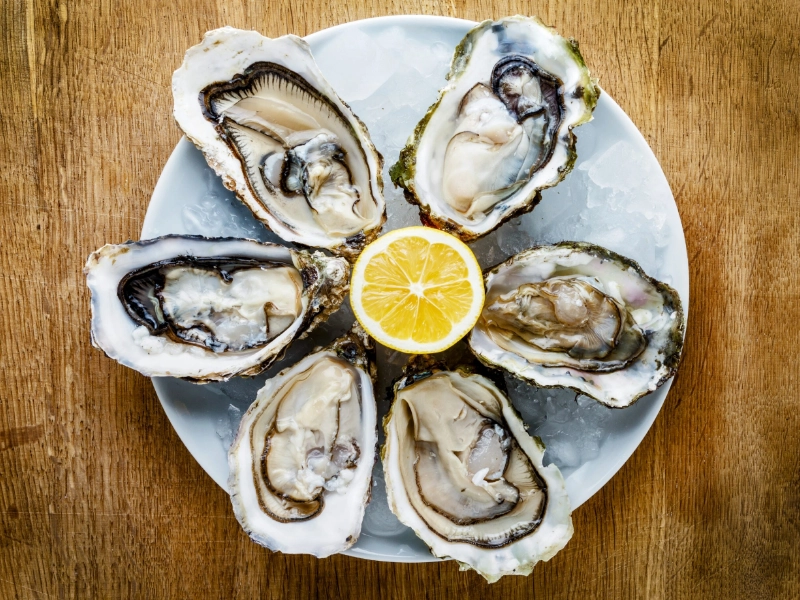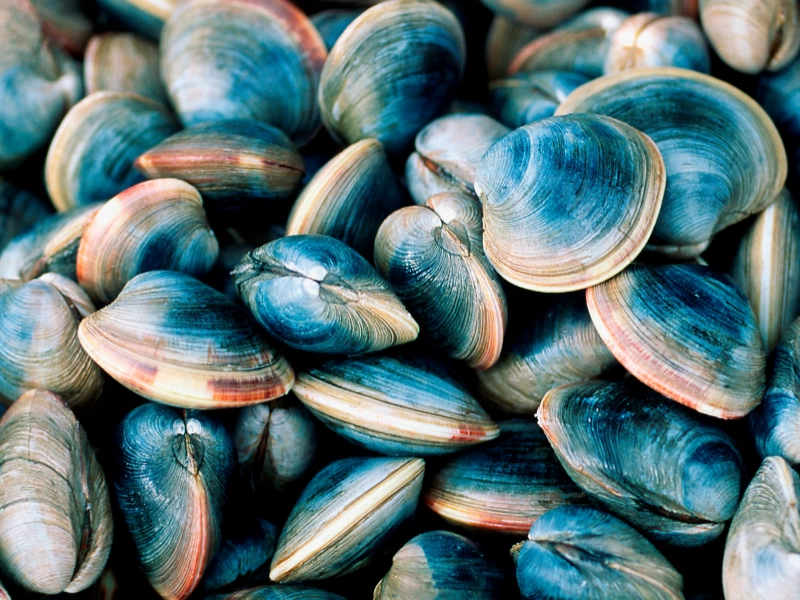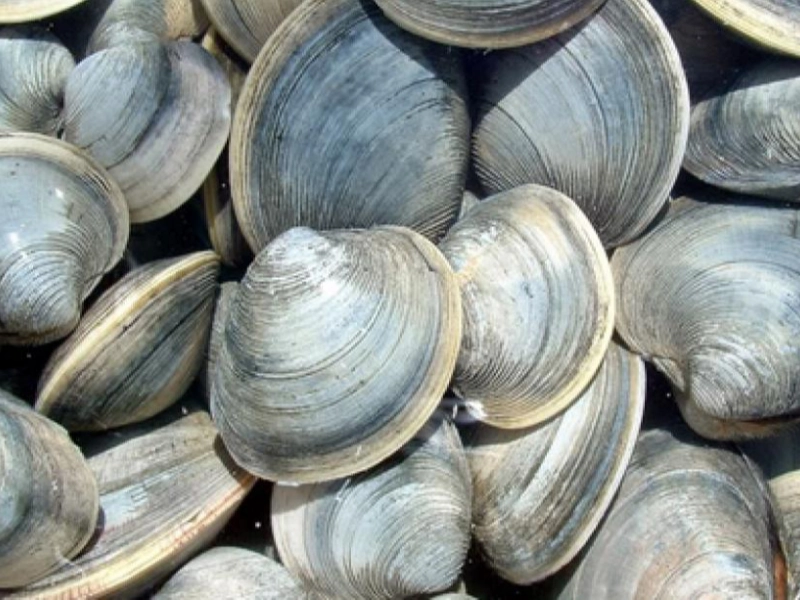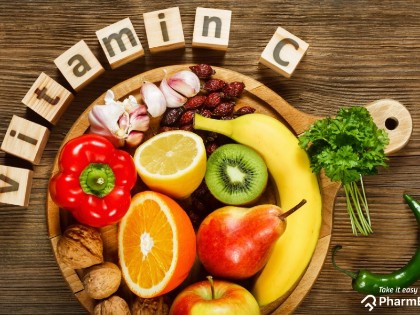The Nutritious Powerhouse: Shellfish
Shellfish are a healthy substitute for animal proteins since they are high in protein and low in calories. They are also a good source of minerals, omega-3 fatty acids, and vitamin B12. Shellfish, like other seafood, is high in omega-3 fatty acids, which have been demonstrated to lower blood pressure, treat the symptoms of arthritis, prevent cancer, and cut the risk of heart disease. Additionally, they supply the vital amino acids required to synthesise protein.
vitamins

Minerals
 Seafood is a great source of minerals like magnesium, which helps regulate blood pressure, energy metabolism, and muscle and nerve function; potassium, a macromineral that is essential for heart rate control and muscle health; calcium, which helps maintain bone density and lowers the risk of osteoporosis; and zinc, which is crucial for wound healing. Furthermore, beta-carotene, which is converted to vitamin A, and the mineral selenium are among the many beneficial carotenoids found in shellfish.
Shellfish are often low in calories, high in lean protein, and high in good fats. They are also a good source of antioxidants, which fight disease. The Department of Agriculture's nutritional guidelines prescribe two servings of protein meals per week, which can be achieved by eating a range of seafood, including oysters, clams, scallops, and mussels. This type of mollusc is a great source of vitamin B-12, which promotes bone growth and guards against osteoporosis.
Seafood is a great source of minerals like magnesium, which helps regulate blood pressure, energy metabolism, and muscle and nerve function; potassium, a macromineral that is essential for heart rate control and muscle health; calcium, which helps maintain bone density and lowers the risk of osteoporosis; and zinc, which is crucial for wound healing. Furthermore, beta-carotene, which is converted to vitamin A, and the mineral selenium are among the many beneficial carotenoids found in shellfish.
Shellfish are often low in calories, high in lean protein, and high in good fats. They are also a good source of antioxidants, which fight disease. The Department of Agriculture's nutritional guidelines prescribe two servings of protein meals per week, which can be achieved by eating a range of seafood, including oysters, clams, scallops, and mussels. This type of mollusc is a great source of vitamin B-12, which promotes bone growth and guards against osteoporosis.
Fatty Acids Omega 3
 Because they are high in protein and healthy fats, shellfish are a great supplement to any diet. Additionally, they are a good source of omega-3 fatty acids, particularly DHA and EPA (docosahexaenoic acid). These heart-healthy fats can lower inflammation, lower the risk of heart disease, and enhance eye health. They also encourage a healthy pregnancy and assist with the development of the baby's brain (21, 22).
Glucosamine, which is abundant in shellfish, has been demonstrated to enhance joint health by reducing arthritis-related stiffness and oedema. Additionally, they are a wonderful source of calcium, which helps build stronger bones and lowers the chance of developing osteoporosis in later life. Additionally, seafood is a fantastic source of zinc, selenium, and iron. The majority of individuals don't get enough of the nutrients found in seafood. (23, 24)
Because they are high in protein and healthy fats, shellfish are a great supplement to any diet. Additionally, they are a good source of omega-3 fatty acids, particularly DHA and EPA (docosahexaenoic acid). These heart-healthy fats can lower inflammation, lower the risk of heart disease, and enhance eye health. They also encourage a healthy pregnancy and assist with the development of the baby's brain (21, 22).
Glucosamine, which is abundant in shellfish, has been demonstrated to enhance joint health by reducing arthritis-related stiffness and oedema. Additionally, they are a wonderful source of calcium, which helps build stronger bones and lowers the chance of developing osteoporosis in later life. Additionally, seafood is a fantastic source of zinc, selenium, and iron. The majority of individuals don't get enough of the nutrients found in seafood. (23, 24)
Fibre
 Scallops, mussels, oysters, and clams are examples of shellfish that are rich in protein. They also have vitamin B12 and omega-3 fatty acids, which are heart healthy. Research indicates that brain function can be affected by low vitamin B12 levels, particularly in adults. Additionally, shellfish contain glucosamine, which has been demonstrated to enhance joint health, and calcium, which is good for bones. Although a lot of individuals steer clear of shellfish due to their potential cholesterol content, it's crucial to understand that cholesterol in food does not equal cholesterol in the blood.
Shellfish such as oysters, clams, prawns, and lobster are nutrient-dense powerhouses that include vitamins, minerals, antioxidants that fight disease, lean protein, and heart-healthy omega-3 fatty acids—even though salmon and tuna tend to receive all the limelight. They have few calories as well. Clams contain only 126 calories per ounce. They also include a lot of astaxanthin and beta-carotene, two carotenoids that are protective. Although eating shellfish is typically safe, there may occasionally be health risks due to their exposure to some unclean habitats and handling and farming methods.
Scallops, mussels, oysters, and clams are examples of shellfish that are rich in protein. They also have vitamin B12 and omega-3 fatty acids, which are heart healthy. Research indicates that brain function can be affected by low vitamin B12 levels, particularly in adults. Additionally, shellfish contain glucosamine, which has been demonstrated to enhance joint health, and calcium, which is good for bones. Although a lot of individuals steer clear of shellfish due to their potential cholesterol content, it's crucial to understand that cholesterol in food does not equal cholesterol in the blood.
Shellfish such as oysters, clams, prawns, and lobster are nutrient-dense powerhouses that include vitamins, minerals, antioxidants that fight disease, lean protein, and heart-healthy omega-3 fatty acids—even though salmon and tuna tend to receive all the limelight. They have few calories as well. Clams contain only 126 calories per ounce. They also include a lot of astaxanthin and beta-carotene, two carotenoids that are protective. Although eating shellfish is typically safe, there may occasionally be health risks due to their exposure to some unclean habitats and handling and farming methods.








